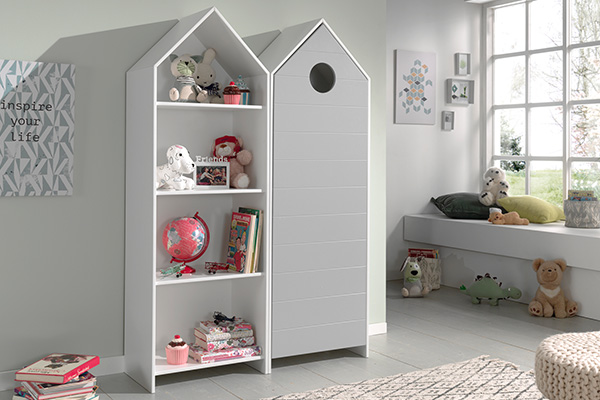A bookcase is a great addition to a child’s bedroom or playroom. Here are a few things to consider when choosing yours.

A bookcase is a great addition to a child’s bedroom or playroom. Not only do they keep books neatly tidied away but there is something special about selecting a good book from the shelf and encouraging your child to read. There are lots of different sizes, designs, colours and finishes to choose from.
Need A Book Shelf For Your Bookworm?
A traditional bookcase has plenty of room for your child’s library of books and they are also a great space for displaying board games, trophies and trinkets.
Or, how about a wonderful open facing bookcase? This simply means that the shelf is designed with a front rail so that the book covers can be displayed facing forwards. This is such a great design for younger children and offers them easy access to find their favourite story books.
Maybe you would prefer a modern ladder shelving bookcase? This design is incredibly stylish and not only looks fantastic but offers amazing shelf space!
Some bookcases are designed to fit underneath a mid sleeper or high sleeper bed and may come as part of a bedroom collection. The beauty of modular furniture is that it can be used underneath the bed frame or moved elsewhere in the room – the choice is yours.
We have a range of painted bookcases, wooden and even contemporary metal bookcases so you can choose a design that suits your home.
What safety issues should I consider?
- Check every now and again and ensure that the bookcase is secure, in particular the shelves. Books can be heavy!
- Do not use substitute parts that are not designed for use with the bookcase. Always contact us directly for replacement parts.
- For toddlers, it may be a good idea to use furniture corner protectors. This will depend on the design of your bookcase.
- With regard to safety, particularly where small children are concerned, we advise that you secure your furniture to the wall to prevent the product from tipping forwards. You will need to obtain and use fixing devices that are suitable for the walls in your home. Speak to your local DIY store if you are unsure of what fixings to use and seek their advice.





